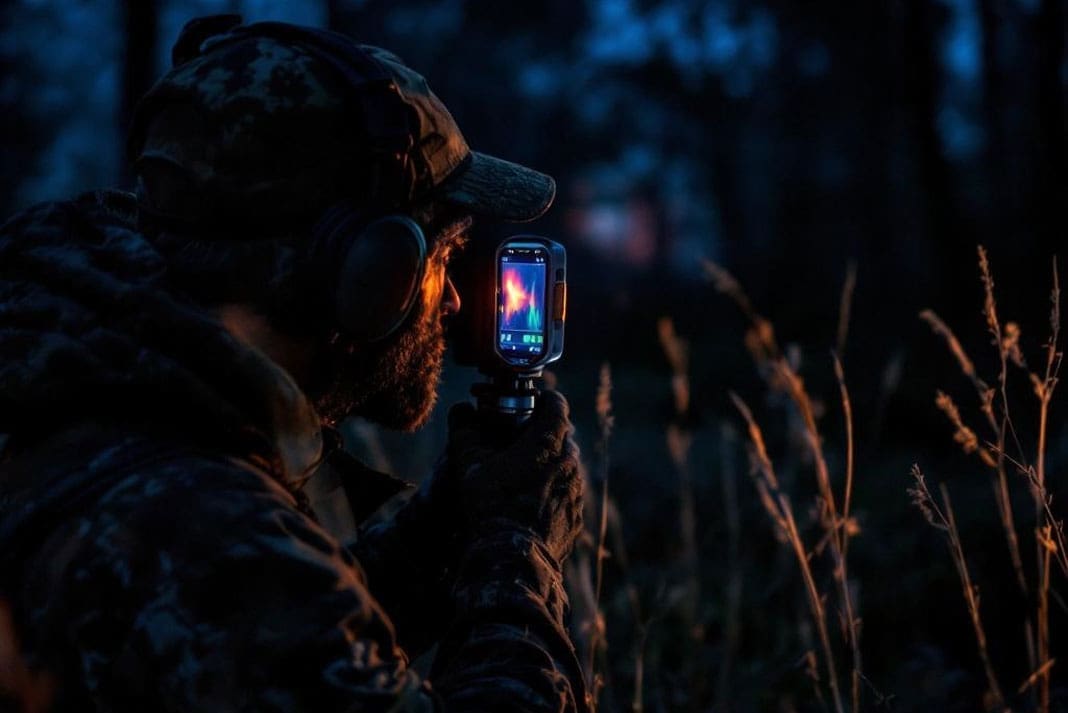Thermal imaging cameras have revolutionized the way hunters track and identify game, offering an edge in both day and nighttime scenarios. These cameras translate infrared radiation (heat) into visible images, helping hunters spot animals by their heat signatures rather than traditional visual cues. However, understanding the color schemes and what they represent is crucial for effective use. In this blog post, we will delve into the meanings behind thermal camera colors, provide insights into their use for deer hunting, and address frequently asked questions to enhance your hunting experience.
Thermal Imaging Basics
How Thermal Cameras Work
Thermal cameras detect infrared radiation emitted by all objects based on their temperature. This data is processed to create an image346### Understanding Thermal Camera Colors: A Guide for Deer Hunters
Thermal cameras have revolutionized the world of hunting, offering enhanced visibility that makes tracking even in the darkest conditions feasible. As an experienced deer hunter, utilizing a thermal camera allows you to better understand and interpret the environment around you. The key to maximizing the use of these devices is understanding what those vivid colors on the screen actually mean. In this article, we will delve into the meaning behind thermal camera colors, their applications in deer hunting, and address some frequently asked questions.
The Basics of Thermal Imaging
Before we dive into color interpretations, it’s important to grasp how thermal imaging works. Unlike traditional night vision optics that rely on visual light, thermal cameras detect the infrared radiation emitted by objects. Every entity emits infrared radiation, with hotter objects emitting more than cooler ones. Thermal cameras capture this radiation and render it visually in the form of a thermogram, where different colors represent different temperatures.
Understanding the Color Palettes
Thermal cameras generally use various color palettes to depict temperature changes. Each color on these palettes signifies a specific temperature range. The most common palettes include White Hot, Black Hot, Rainbow, and Ironbow.
White Hot
In the White Hot palette, hotter areas appear white or light gray, while cooler regions are displayed in black or dark gray. This is one of the most intuitive and popular palettes because of its simplicity and ease of interpreting details in complex scenes.
Black Hot
Conversely, the Black Hot palette inverts the White Hot one. Here, hot areas show up as black, and cooler areas are white or light gray. This palette often provides better contrast in varying environments, making it a favorite among many professional hunters.
Rainbow
The Rainbow palette uses a spectrum of colors to represent the temperature shifts. Typically, warm areas are shown in red or orange, and cooler areas in blue or purple. This color variety can make it easier to differentiate between temperature gradients, but it may require time to get accustomed to interpreting it quickly during a hunt.
Ironbow
In the Ironbow palette, similar to Rainbow, warmer temperatures might appear in colors like yellows and reds and cooler areas in purple or blue. This palette is especially useful for pinpointing deer, as the high contrast can make the animals stand out against cool backgrounds.
Practical Applications in Deer Hunting
Understanding these colors is a game-changer for deer hunting. Here’s how you can apply this knowledge:
- Identifying Game:Use thermal colors to quickly identify deer among other animals in dense foliage. A Rainbow or Ironbow palette is typically effective in distinguishing a warm-bodied deer from its cooler surroundings.
- Tracking Movement:Monitor movement across a wide area by observing shifts in thermal signatures. This is particularly useful at twilight or dawn when visual confirmation is difficult.
- Spotting Wounded Deer:Locate injured deer by looking for signs of blood trails, as the fresh blood will often show up as a different temperature than its surroundings, especially with color palettes like Ironbow.
- Understanding Habitats:Recognize potential shelters or bedding areas by observing temperature differences between various parts of the terrain.
Key Takeaways
- Palette Choice Matters:Different palettes offer distinct benefits. White Hot and Black Hot are great for clarity, while Rainbow and Ironbow provide temperature gradient details.
- Thermal is Not Night Vision:Understanding the difference can save you from misinterpreting the scene; thermal detects heat, whereas night vision amplifies visible light.
- Thermal Cameras Enhance Situational Awareness:They allow hunters to detect the presence and movements of wildlife that might be missed with the naked eye or traditional optics.
- Practice Interpretation:Spend time learning to interpret your thermal images before heading into the field for the hunt.
Frequently Asked Questions
1. How do I switch between color palettes on my thermal camera?
Most thermal cameras come with a user guide or manual that provides instructions on changing settings. Typically, you can access palette options through a menu using buttons or a touchscreen interface.
2. Is there a ‘best’ color palette for deer hunting?
The best palette often depends on personal preference and specific hunting conditions. Experiment with different palettes to see which one best suits your needs.
3. Can I use my thermal camera during the day?
Yes, thermal cameras work both day and night since they rely on heat detection rather than light amplification.
4. Are there legal restrictions on using thermal cameras for hunting?
Regulations vary by region, so always check local wildlife laws to ensure you’re in compliance when using thermal technology in hunting.
5. Where can I learn about the latest in thermal imaging technology?
Several authority sites offer in-depth resources, such asFLIR Systems’ educational resources and Thermal Imaging from Outdoor Life.
Thermal cameras are invaluable tools for deer hunters, providing visibility and insight that enhance your understanding of the wildlife environment. By mastering the interpretation of thermal camera colors, you can sharpen your skills and increase your effectiveness in the field. Happy hunting!
